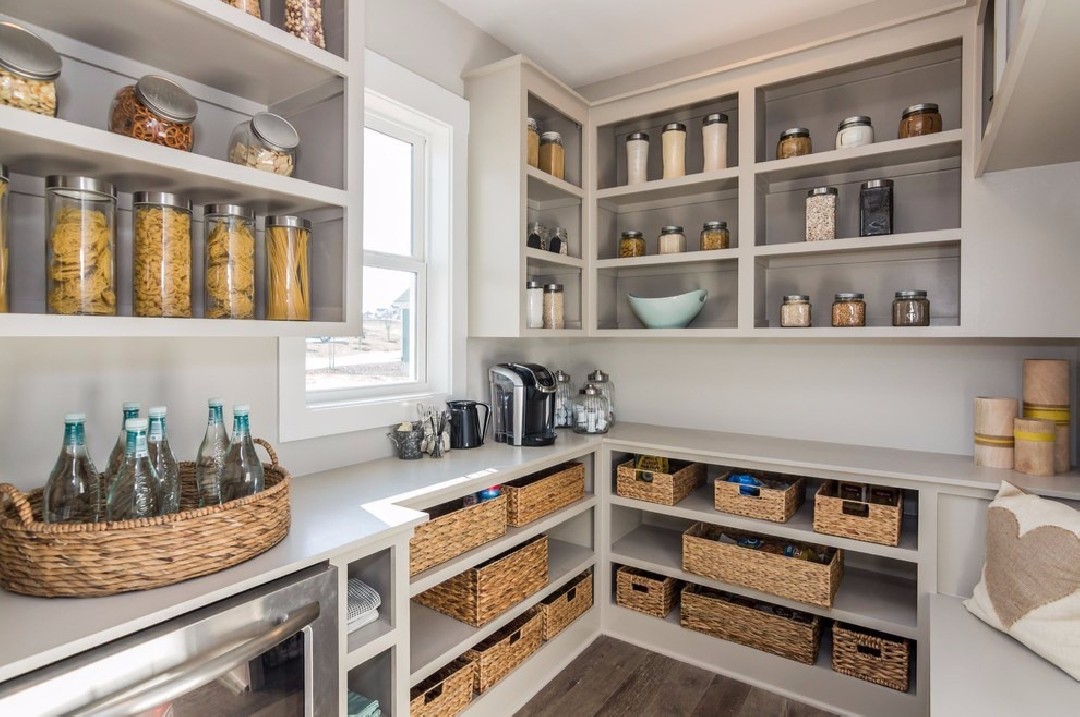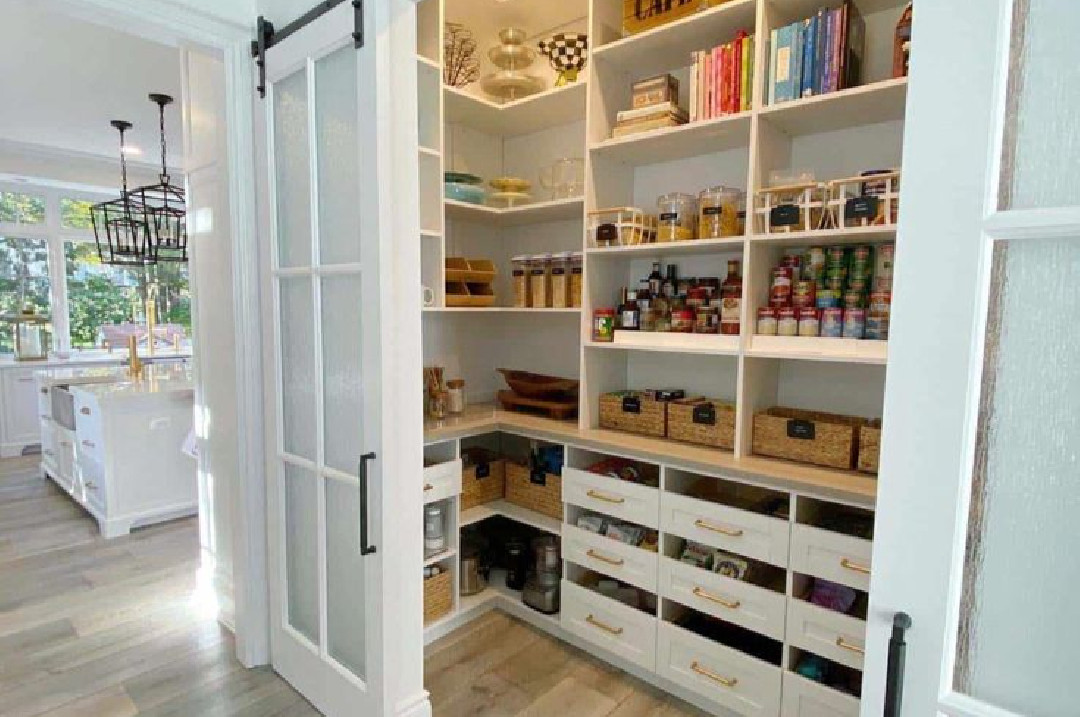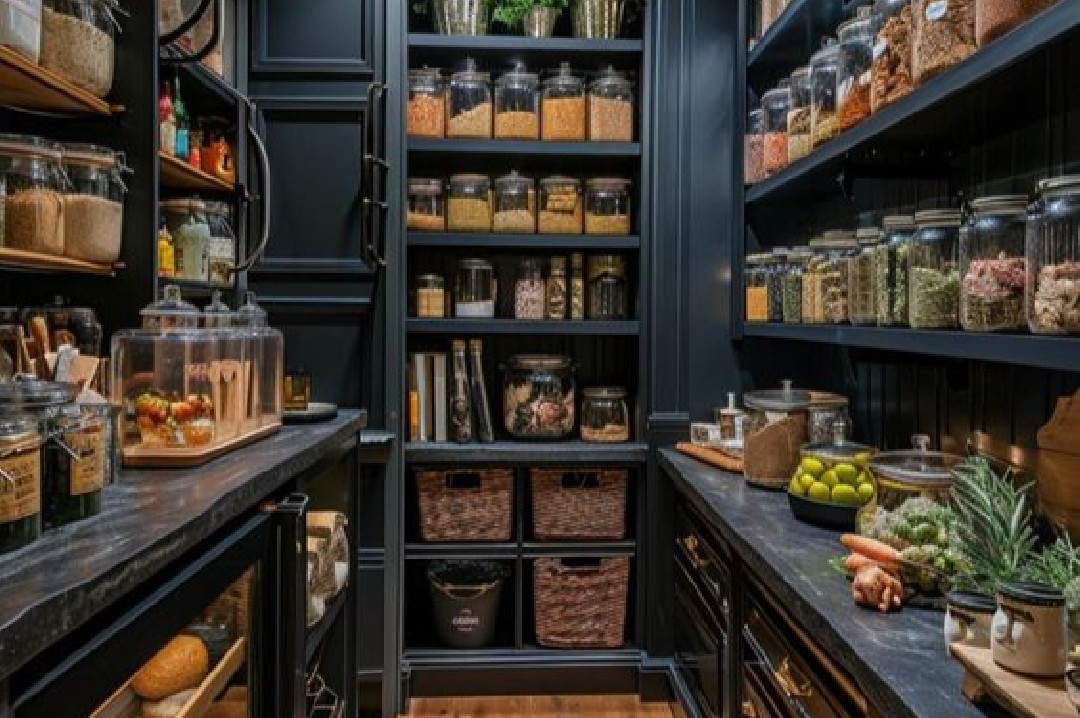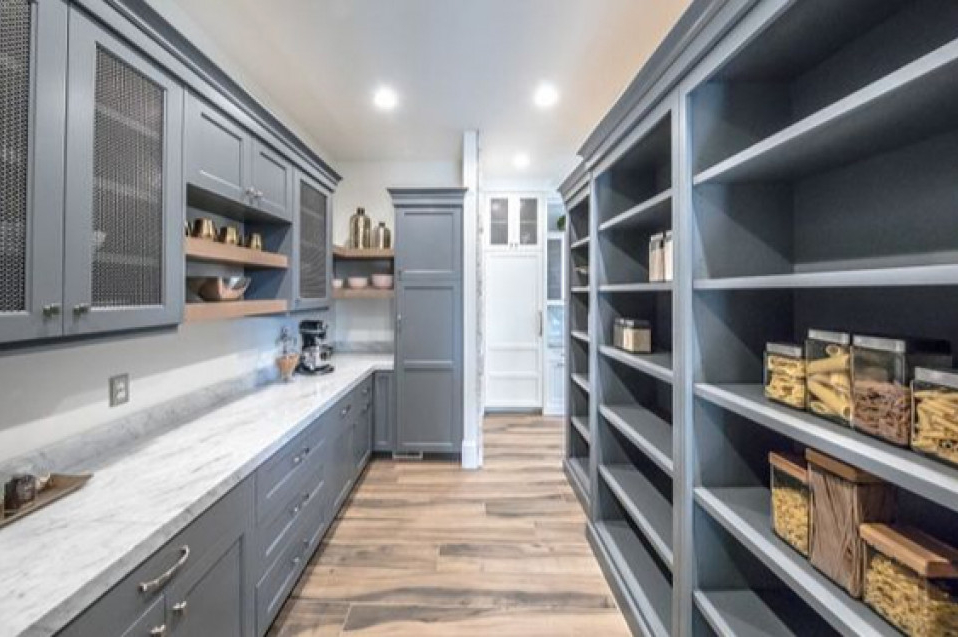Maximize Your Pantry Space: A Comprehensive Guide to Your Dream Pantry

Having a neat, organized, and functional pantry is a dream for many people. However, space constraints often become a major obstacle. Don't worry, with a little creativity, careful planning, and this complete guide, you can transform your narrow pantry into an optimal storage space and make your pantry dreams come true.
Step 1: Understand Your Needs and Measure Your Space Accurately

The journey to your dream pantry begins with understanding your needs. Create a detailed list of items you will store in your pantry, such as:
- Staple foods (rice, oil, sugar, flour)
- Spices and condiments (pepper, salt, soy sauce, herbs)
- Snacks and light bites
- Eating and drinking utensils
- Rarely used cookware (baking pans, mixer)
Consider the frequency of use for each item. For example, frequently used staple foods should be placed in easily accessible locations.
After creating your list, the next step is to carefully measure your pantry space. Measure the dimensions of the height, width, and depth of the space. Don't forget to consider the distance between the door and walls, as well as potential dead space that can be utilized. Create a pantry layout sketch on paper or use free interior design software to visualize the ideal layout.
Step 2: Choose the Right Shelves and Storage Systems

Shelves are the key to maximizing pantry space. Choose shelves that are sturdy, durable, and match your pantry style. Here are some shelf options to consider:
- Tiered Shelves: Utilize vertical space effectively with tiered shelves. Choose shelves with spacing between tiers that suits the height of the items you will store.
- Corner Shelves: Utilize corner space in your pantry with specially designed corner shelves. These shelves are perfect for storing infrequently used items.
- Hanging Shelves: Install hanging shelves on walls to store lightweight items like mugs, small spice jars, or tea bags.
- Adjustable Shelves: Choose shelves with adjustable tier heights. This provides flexibility in organizing and customizing your storage space.
The right storage system will maintain order and make access easier. Consider using storage containers in various shapes and sizes. Choose container materials that suit your needs, such as glass for spices, clear plastic for dry goods, or airtight containers for food that absorbs odor easily.
Use lazy susans or rotating organizers to store items in pantry corners. These tools allow you to easily retrieve items stored at the back.
Step 3: Optimize Layout and Organization

Effective organization principles are the key to a functional and efficient pantry. Here are some tips for optimizing layout and organization:
- Group Items by Type: Separate staple foods, spices, snacks, utensils, and cookware into their respective storage zones. This will make it easier to find the items you need.
- Align with Cooking Habits: Place frequently used items in easily accessible spots. For instance, store commonly used spices on the middle or top shelves.
- Utilize Under-Shelf Space: Use the empty space under shelves to store infrequently used items, such as large baking tools or bulk dry food jars. Use closed containers or pull-out drawers to maintain item cleanliness.
- Optimize Behind-the-Door Space: The back of the pantry door can be utilized as an extra spot to install spice racks or hooks. You can also use adhesive hooks to hang lightweight cookware like spatulas or ladles.
Step 4: Space-Saving and Cleaning Tips and Tricks

A. Space-Saving Tips:
- Use Multipurpose Hooks: Utilize multipurpose hooks for frequently used cookware like pots, pans, or spatulas.
- Label Every Container: Label each storage container to easily identify contents and find items quickly. Use clear labels or labels with attractive colors.
- Implement FIFO System: Apply the FIFO (First In First Out) system for food items. Store new stock at the back and use older stock first. This prevents food from expiring and going to waste.
- Utilize Pantry Walls: Pantry walls can be used to stick shopping lists, recipe cards, or calendars. You can also install small hanging shelves to store cookbooks or recipe magazines.
- Employ Proper Lighting: Good lighting will make your pantry feel more spacious and organized. Use energy-efficient LED lights for pantry illumination. Position lights strategically to ensure the entire pantry area is well-lit.
- Maintain Cleanliness and Order: Monitor your pantry regularly and clean it thoroughly. Tidy up used items and discard expired food. Wipe down shelf surfaces and storage containers to keep them free of dust and dirt.
B. Cleaning Tips:
- Use Microfiber Cloths: Microfiber cloths are ideal for cleaning shelf surfaces and storage containers in your pantry. The soft and absorbent microfiber material effectively removes dust and dirt without leaving scratches.
- Clean Up Spills Immediately: Immediately clean up food or beverage spills in your pantry to prevent stains and unpleasant odors. Use a damp cloth or paper towel to clean up spills.
- Store Food Properly: Store food in airtight containers to maintain freshness and prevent contamination. Use labels on containers for easy identification and expiration dates.
- Regularly Discard Food Waste: Discard expired or inedible food items. Ensure pantry trash bins are always tightly sealed to prevent pests and unpleasant odors.
Step 5: Personal Touches and Decoration

A neat and functional pantry is not only practical but can also be a beautiful and personal space. Decorate your pantry with décor that matches your style. Here are some pantry décor ideas:
- Use Houseplants: Small houseplants like cacti or succulents can add a fresh and natural touch to your pantry. Choose plants that are durable and easy to care for.
- Incorporate Fabric Scraps: Fabric scraps with attractive patterns can be used to line shelves or cover the front of storage containers. This will add a unique touch of color and pattern to your pantry.
- Display Paintings or Photos: Decorate pantry walls with paintings or your favorite photos. Choose artwork that reflects your taste and style.
- Use Decorative Hanging Lights: Decorative hanging lights with unique designs can provide beautiful lighting and enhance the aesthetics of your pantry.
Step 6: DIY and Collaboration

If you have DIY skills, utilize them to create pantry décor or accessories. You can make simple wooden shelves, fabric scrap storage containers, or wall decorations from recycled materials.
Invite friends or family to help you create your pantry. You can share ideas and materials to save on expenses and create a unique and personal pantry.
Remember, a dream pantry is not about a big budget but about creativity, resourcefulness, and personal touches. By following this comprehensive guide and applying the tips above, you can transform your narrow pantry into a functional, efficient, and beautiful storage space. Happy creating and crafting your dream pantry!
Additional Tips:
- Utilize the empty space above the refrigerator to install additional shelves.
- Use woven baskets or wicker baskets to store fruits, vegetables, or snacks.
- Install a mirror on a pantry wall to make the space feel more spacious.
- Use non-slip mats on shelves to prevent items from sliding and falling.
- Create a pantry shopping list to help you plan grocery purchases.
- Regularly declutter your pantry to remove unused items.
I hope this guide is helpful for you in making your dream pantry a reality!







